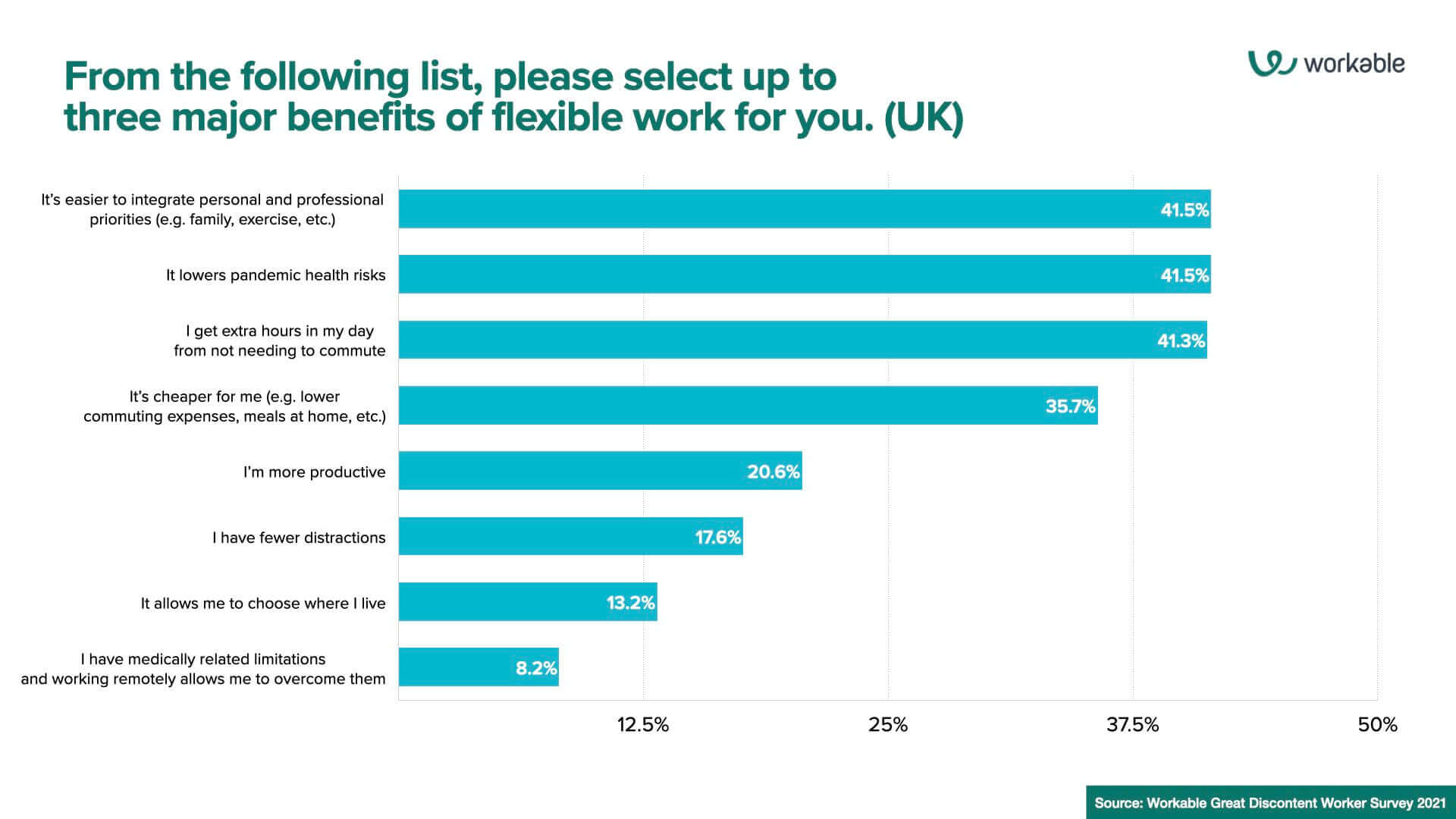Work From Home statistics: Essential Insights for Every UK SME
As digital transformation gathers momentum, organisations worldwide relentlessly review and adapt their operational frameworks. The United Kingdom, a key nexus of innovation and industry, has keenly felt these shifts. These Work from home statistics, underscore how remote working, once viewed as a peripheral or supplementary approach, has experienced a significant transformation in contemporary times.
Over the brief span from September 2022 to January 2023, our nation witnessed a telling shift in employment paradigms. A substantial 16% of the working adult population asserted a complete transition to home-based roles, eschewing the conventional office environment entirely. Concurrently, an intriguing 28% reported the adoption of a hybrid model, seamlessly integrating the comforts of home with the familiarities of on-site engagements.
These statistics, more than mere numbers, chart a new course in understanding the professional landscapes of the future and the ever-evolving preferences of the British workforce. In this article, we delve deep into these work from home statistics, shedding light on the underlying factors and the potential ramifications for businesses and employees alike.
▶Assessing the Work From Home Trend in the UK
▶Delving into the Demographics of the UK’s Work From Home Employees
▶ Constructive Impacts of Remote Work in the UK
▶ Industry-Wide Adoption of Permanent Remote Work in the UK
▶ Understanding UK Businesses’ Shift to Remote Work
▶Exploring Additional Aspects in the UK’s Remote Work Scenario
▶Concluding Observations on the UK’s Work from Home Statistics
TOP 10 Insights and Trends of Work from Home Statistics
| Insight | Most Important Points |
| Escalation of Hybrid Work in the UK | – Growing “work from home” practices. – Diverse workforce expectations. |
| Impact on Security | – Increased cybersecurity threats. – Emphasis on data protection and secure access. – Solutions: tight access protocols, cybersecurity measures, employee training, VPNs, and multi-factor authentication. |
| Demographics of UK’s Remote Workers | – Variable trends by region, age, and industry. – Scotland’s significant increase in remote work. |
| Income and Occupation Trends | – Correlation between higher earnings and remote work feasibility. – High adoption among professionals. |
| Beneficial Responses from Work from Home Model | – Benefits: work-life balance, reduced commute, potential productivity increase. – Challenges: isolation, blurred boundaries. |
| Improving Work-Life Balance in the UK | – Shift towards remote work enhancing work-life balance. – Challenges: isolation, remote team management. |
| Industry-Wide Adoption of Remote Work | – Diverse sectoral trends, Information and Communication sector leading. |
| Understanding UK Businesses’ Shift to Work from Home Model | – Enhanced well-being, productivity, job satisfaction. – Concerns: mental well-being, isolation. |
| Elevating Staff Well-Being in the UK | – Remote work’s positive impact on staff well-being and job satisfaction. |
| Security Concerns and Solutions in UK’s Remote Work Landscape | – 57% IT decision-makers report increased data breach risks. – Solutions: employee training, secure devices, VPNs, multi-factor authentication, software updates, physical security. |
1# Escalation of Hybrid Work in the UK
Trends:
▶Sustained growth in “work from home” practises is anticipated to maintain a prominent role in the UK’s employment landscape.
▶Diverse expectations from the workforce, seeking a balance between remote and on-site employment.
Influential Factors:
▶Evolution of work patterns, technological advancements, and organisational policies
2# Impact on Security
Concerns:
▶Increased cybersecurity incidents, insider threats, and phishing attacks.
▶Data protection and secure remote access are significant concerns.
Solutions:
▶Tight access protocols, robust cybersecurity measures, and employee training.
▶Utilisation of secure technologies like VPNs and multi-factor authentication.
3# Demographics of UK’s Remote Workers
Observations:
▶Variable trends across regions, age groups, and industries.
▶Scotland marked the most significant percentage increase in remote working.
4# Income and Occupation Trends
Trends:
▶Correlation between higher hourly earnings and the feasibility of working from home.
Observations:
▶A high propensity for working from home is observed among professional roles such as lawyers, accountants, and managers.
5# Beneficial Responses from Work from Home Model
Benefits:
▶Enhanced work-life balance, reduced commute time, and potentially increased productivity and job satisfaction.
Challenges:
▶Sense of isolation, blurred lines between professional and personal life.
6# Improving Work-Life Balance in the UK
Insights:
▶Significant shift towards “work from home” approach, contributing to enhanced work-life equilibrium and reduced commuting hours.
Challenges:
▶Potential feelings of isolation and difficulties in managing remote teams.
7# Industry-Wide Adoption of Remote Work
Insights:
▶Diverse trends across different sectors; Information and Communication sector leading remote work adoption.
8# Understanding UK Businesses’ Shift to Work from Home Model
Insights:
▶Enhanced well-being, self-asserted productivity, and heightened job satisfaction noted.
Concerns:
▶Diminished mental well-being due to isolation in remote working environments.
#9 Elevating Staff Well-Being in the UK
Observations:
▶Remote work contributes positively to overall staff well-being and job satisfaction.
#10 Security Concerns and Solutions in UK’s Remote Work Landscape
Concerns:
▶57% of IT decision-makers cite increased exposure to data breach risks.
Solutions:
▶Comprehensive employee training, provision of secure devices, use of VPNs, multi-factor authentication, regular software updates, and ensuring physical security.
Assessing the Work from home Trend in the UK
The persistence of this emerging trend of work from home system will be inherently subject to a variety of factors, encompassing the continuous evolution of work patterns, progressive technological enhancements, and the policies set forth by organisations. As remote employment perpetuates offering noteworthy flexibility and advantages to both employees and employers alike, its stature is projected to remain eminent within the professional landscape of the UK.
Furthermore, it is crucial to accentuate a formerly identified weighting anomaly within the Opinions and Lifestyle Survey, leading to possible disparities in the representation of population totals within the datasets when juxtaposed with official population assessments disclosed by the Office for National Statistics (ONS). Despite this identified issue, it is not anticipated to adversely impact ensuing analyses or the approximate figures to be presented in the imminent release or datasets.
Technological Facilitators of the Work From Home model in the UK
Microsoft Teams has ascended to an indispensable role in facilitating the “Work from home” model, offering a consolidated platform for employees to engage and collaborate on diverse projects. It delivers multiple functionalities designed to augment productivity and refine communication processes.
Key attributes of Microsoft Teams include:
▶Video Conferencing: This feature enables users to organise and participate in video conferences and virtual meetings with colleagues, clients, or partners, supplemented by functionalities like screen sharing, background blur, and a together mode.
▶Chat and Collaboration: Users can indulge in real-time chat dialogues with individual or group counterparts within Microsoft Teams, along with the ability to share files, co-author documents, and seamlessly collaborate on various projects.
▶Calling: The platform allows users to initiate and receive calls directly within its interface, complete with advanced calling features encompassing group calling, voicemail, and call transfers.
▶Integration with Office 365: A seamless integration with other Office 365 applications such as Word, Excel, PowerPoint, and OneDrive, enabling users to access and collaborate on files directly within the Teams interface.
With its extensive adoption across diverse industries within the UK, Microsoft Teams stands out due to its user-friendly interface, comprehensive feature suite, and robust integration capabilities, thereby emerging as a preferred selection for remote work collaboration. By capitalising on technologies akin to Microsoft Teams, organisations continue to uphold robust productivity levels while adeptly adapting to work-from-home mode configurations.
Microsoft Teams: A Pillar in the UK’s Remote Working Shift
| Year | Users in millions |
| 2017 | 2 |
| 2018 | 8 |
| 2019 | 20 |
| 2020 | 75 |
| 2021 | 145 |
| 2022 | 270 |
| 2023 | 300 |
The invaluable role of Microsoft Teams in empowering work-from-home model cannot be overstated. By offering a centralised platform for communication and collaboration, it stands out as an exemplary tool for remote work. Its intuitive interface, comprehensive array of features, and robust integration capabilities cement its position as the favoured choice for myriad organisations spanning various sectors.
Statistics on the Rise of Hybrid Work in the UK
The enduring presence of this remote working trend will invariably hinge on diverse factors, including the evolution of work patterns, advancements in technology, and organisational policies. Given the sustained provision of flexibility and myriad benefits for both employees and employers by remote work, it stands to remain a significant element of the UK’s professional terrain.
Impact on Security: Tackling Breaches in the Shift
▶Cybersecurity Incidents: The onset of widespread remote work has been paralleled by a significant surge in cybersecurity incidents. The amplified vulnerability, with home devices being used for professional tasks, has not gone unnoticed by cybercriminals. It is imperative for organisations to remain astute and integrate robust cybersecurity measures to fortify against such threats.
▶Insider Threats: The increase in the work-from-home workforce has exacerbated the “insider threat” dimension. This era has witnessed a rise in both the frequency and financial implications of insider threats. It is paramount for organisations to enforce stringent access controls, monitor user activities assiduously, and administer regular cybersecurity training to staff, mitigating such internal risks.
▶Data Protection: Remote work propels data protection and regulatory compliance, such as adherence to the General Data Protection Regulation (GDPR), to the forefront of concerns. Organisations must ensure remote staff are conversant with data protection stipulations, furnish secure communication conduits, and employ encryption methods to safeguard delicate information.
▶Phishing Attacks: The susceptibility of remote workers to phishing onslaughts is a pressing concern, potentially leading to data compromises and ancillary security incidents. It’s essential to enlighten employees about the nuances of phishing ploys, advocate the employment of multi-factor authentication, and establish comprehensive email filtering systems to curtail phishing endeavors.
▶Secure Remote Access: Ensuring secure remote access is pivotal. Utilisation of technologies like virtual private networks (VPNs) or secure remote desktop protocols (RDPs) significantly fortifies data transmissions between remote staff and corporate networks.
▶Endpoint Security: The frequent use of personal apparatus for professional duties necessitates stringent endpoint security measures encompassing antivirus applications, firewalls, and regular software updates, safeguarding against malware and diverse security hazards.
▶Employee Awareness: The role of employee awareness in sustaining a secure remote work milieu is undeniable. Comprehensive cybersecurity training, dissemination of secure remote work best practices, and fostering a culture of prompt reporting of any security anomalies or dubious activities are vital.
Delving into the Demographics of the UK’s Work From Home Employees
Income and Occupation Trends in the UK’s Remote Work
▶Regional Patterns: The escalation in home-based work exhibits variation across the diverse regions of the UK, with Scotland marking the most significant percentage augmentation at 203.5%, followed by Northern Ireland at 56.4%.(Source)
▶Age Group: The year 2020 witnessed disparate trends in the number of employees predominantly working from home, with variations discernible across diverse age brackets.
▶Industry Composition: Evaluating the industrial breakdown of remote workers is crucial for a comprehensive understanding of the demographics involved in remote employment.
▶Occupation: The professional roles occupied by remote workers further contribute to delineating the multifaceted demographic engaged in remote working activities.
In terms of occupational trends, the prevalence of remote work spans a myriad of professions. Noteworthy is the high propensity for remote work among professional roles such as lawyers and accountants, where a substantial 69% can work from home. This is closely followed by managers, directors, and senior officials at 67%, and administrative and secretarial roles at 63%.(Source)
Constructive Impacts of Remote Work in the UK

Improving Work-Life Balance in the UK: A Work From Home Perspective
Beyond these perks, remote employment potentially augments productivity and job contentment. A comprehensive study by the University of Cardiff discerns that individuals working remotely cite elevated levels of job satisfaction coupled with diminished stress levels in contrast to their counterparts stationed in offices.(Source)
Nevertheless, it’s pivotal to acknowledge the inherent challenges of working from home. Certain employees might grapple with a sense of isolation or a perceived detachment from their peers. The demarcation between professional and personal life may blur, adding to the complexity. Employers, too, might encounter hurdles in efficaciously managing remote contingents and ensuring sustained productivity and engagement.
In conclusion, while it’s not devoid of its obstacles, remote working stands out as a beneficial arrangement for numerous UK employees, offering an enriched work-life equilibrium, augmented autonomy, and a notable reduction in commute time.
Industry-Wide Adoption of Permanent Remote Work in the UK
The UK’s Information and Communication Sector Leading Work From Home Adoption
These work from home statistics underscore the inclination of certain sectors towards the adoption of a continuous work from home work model more than others. Nonetheless, it is pivotal to recognise the potential for diverse attitudes and practices within each specific industry.
Understanding UK Businesses’ Shift to Remote Work
As articulated in the report, the period preceding the pandemic witnessed a modest but consistent surge in the adoption of remote and hybrid work arrangements. During January to December of 2019, roughly 12% of the UK’s workforce had engaged in at least a single day of home-based work within the prior week. Concurrently, a mere 5% pronounced a predominant home-based work routine. However, the onset of the pandemic instigated a pronounced shift. By June 2020, approximately 49% of the UK workforce had executed at least one day of home-based work. This encompasses 11% who did so sporadically and a significant 38% who committed to an entirely to work-from-home model. While the relaxation of pandemic-associated restrictions has seen a tapering of these figures, they undeniably supersede the pre-pandemic rates. As of September 2022, 22% of the UK workforce reported at least one home-based work day within the past week, with 13% affirming a wholly remote work pattern.
Exploring Additional Aspects in the UK’s Remote Work Scenario
| Aspect | Key Information |
| Disability and Health | Similar rates of homeworking for disabled and non-disabled workers, 18% for disabled, 16% for non-disabled. Long-standing health conditions have a similar trend, 18% vs. 15%. |
| Ethnicity | “Black or Black British” group less likely to have remote work options (60%) compared to “White British/Irish” (46%). Caution needed due to confidence intervals. |
| Parental Status | Parents of dependent children more likely to engage in hybrid working (31%) compared to those without dependents (26%). Non-parents more likely to have no remote work option (48%) compared to parents (42%). |
| Security Concerns | 57% of IT decision-makers in the UK see increased data breach risks in remote work settings. 20% of organizations have experienced security breaches. Solutions include comprehensive employee training, secure devices, VPN use, multi-factor authentication, data encryption, software updates, secure document management, and physical security at home. |
Disability and Health:
Ethnicity:
Parental Status:
Security Concerns and Solutions in the UK’s Remote Work Landscape
In light of these pressing challenges, consider the subsequent solutions and strategies to enhance and solidify security in a remote working paradigm:
▶Comprehensive Employee Training: Prioritise extensive cybersecurity training for all personnel, elaborating on the identification and management of phishing attempts, robust password protocols, and prudent online navigation.
▶Provision of Secure Devices: Allocate dedicated, company-owned and configured devices to employees, ensuring a standardised and secure operating environment.
▶Secure Network Utilisation: Advocate for the habitual use of virtual private networks (VPNs), ensuring a secure, encrypted connection for remote access to organisational resources.
▶Multi-Factor Authentication: Enforce the implementation of multi-factor authentication for every application and service accessed by remote personnel, enhancing the security threshold.
▶Robust Data Protection: Ensure the encryption of sensitive data both in transit and at rest, safeguarding critical information from unauthorised access.
▶Regular Software Updates: Maintain the currency of software and operating systems across all devices, mitigating the risks of known vulnerabilities and potential threats.
▶Secure Document Management: Educate the workforce on the crucial need for secure disposal of sensitive documents, endorsing shredding prior to discarding.
▶Physical Security Assurance: Promote the establishment of a dedicated and secure workspace at home, ensuring the physical security of remote working environments.
Concluding Observations on the UK’s Work from Home Statistics
Choose your UK Business Connectivity partner wisely

Get a Quote within 48 hours
Contact TWC IT Solutions and our dedicated team will address your inquiries and requests, ensuring that you receive the assistance you seek within 48 hours.





















